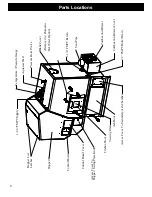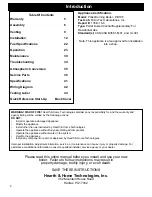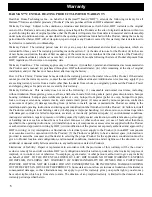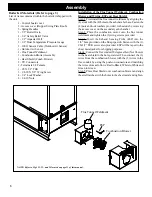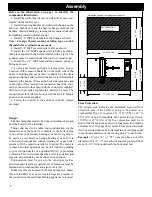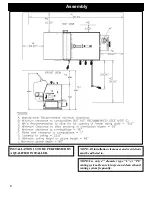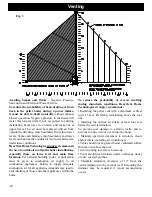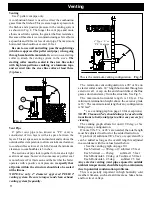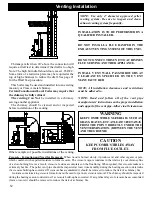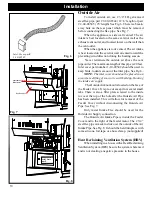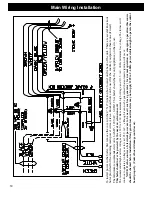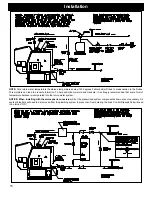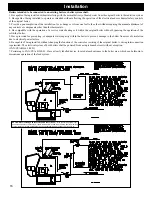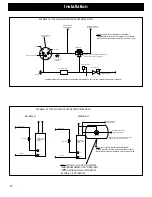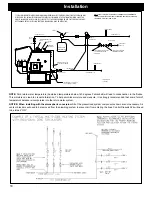
7
Design:
The first thing that needs to be done is deciding where and
how the boiler will be installed.
Things that need to be taken into consideration are the
intended use of the boiler for example, is the boiler going
to be used as your primary heating system or is it going to
be used as a secondary or backup heating system. If it is
to be used in conjunction with an existing oil or gas boiler
system will it be piped in parallel or in series? The answers
to these and other questions can be determined by talking
to your certified dealer or a qualified HVAC or plumbing
contractor. This will ensure that the boiler is installed and
piped to accommodate your needs and expectations.
Consideration must be given to the venting as well as
electrical and clearance requirements. (Clearances must be
maintained to combustibles and also for service)
Make sure fans are not used in the fuel storage area, unless
they are installed so as not to create a negative pressure in
the room where the solid fuel burning appliance is located.
Refer to the illustration on page 3 to identify the
components listed below:
1. Install the control board cover as well as the access cover
located on the feeder cover.
2. Install the spring handles provided with the unit on the
ash door, firebox door and the heat exchanger cleanout rod
handles. (Fasten handles by turning them counterclockwise
and pushing inward simultaneously).
3. Install 1/2” MPT boiler drain in the fitting as shown.
Note: Use pipe thread sealant or teflon tape on ALL
threads before connections are made.
4. Install 3/4” MPT pressure relief valve as shown.
5. Install the 1/2” MPT aquastat well in fitting as shown,
then place aquastat in the well and fasten with a zip tie. The
aquastat sensor is located under the top sheet metal jacket.
6. Install the 1/2” MPT temperature/pressure gauge in
fitting as shown.
7. Locate and install outside air temperature sensor.
Location of this sensor should be on the north side of the
home or building and out of direct sunlight. Use the cable
supplied with the boiler to attach the sensor to the terminals
located on the hopper. (Place at the back side just above and
to the right of the main power connection box) The wires
can be connected to the sensor with the connectors supplied.
Wire nut or butt splice connectors could also be used. The
connections at the boiler can be done with the two 1/4” female
push on connectors supplied.
8. Fasten the conduit to the ash base with the clamps
provided.
Assembly
Floor Protection:
The striped area indicates the minimum required floor
protection area if the boiler is going to be placed on a
combustible floor. It requires 40” X 55”(US) or 42” X
55”(CAN) of non combustible floor protection as shown.
16”(US) or 18”(CAN) of the floor protection must be in
front of the firebox door as shown. Floor protection must be
a minimum of 26 gauge sheet metal. Floor protection must
also be provided under any horizontal run of vent pipe equal
to the outside diameter of the venting plus 2” to each side.
Example:
4” type “L” or “PL” vent pipe has an outside
diameter of 4-1/2” + 2” on each side equals a protected floor
area of 8-1/2” wide underneath the horizontal run.
42" C
ANADA
18" C
AN
16" USA
40" USA
55" USA & CAN
MINIMUM NON-COMBUSTIBLE FLOOR PROTECTION AREA
NON-COMBUSTIBLE
FLOOR PROTECTOR
55" USA & CAN
42" C
ANADA
40" USA
Summary of Contents for PB 105
Page 2: ......
Page 45: ...45 Service Record Notes...
Page 46: ...46 Service Record Notes...



